Bulk Turquoise Stone for Export and Wholesale Distribution
💠 Industries That Use Turquoise Gemstone (Rough, Raw, or Polished)
Scientific name: Hydrated Copper Aluminum Phosphate (CuAl₆(PO₄)₄(OH)₈·4H₂O)
Main varieties: Persian Turquoise, Egyptian Turquoise, American (Sleeping Beauty, Bisbee), Chinese Turquoise
1. Jewelry & Luxury Goods Industry
Turquoise is one of the oldest gemstones used in fine jewelry, renowned for its vibrant blue to green hues, symbolic value, and natural veining (matrix).
2. Cultural & Ethnic Artifacts Industry
Used historically in ceremonial artifacts, religious amulets, and tribal adornments.
Common in:
-
Persian, Native American, Tibetan, and Central Asian crafts
-
Turquoise-inlaid daggers, talismans, prayer beads, and statues
✅ Seen as a stone of protection, wisdom, and status
3. Gemstone & Mineral Trade / Lapidary Industry
Rough and raw turquoise is processed, cut, stabilized, or polished in lapidary workshops.
Key uses:
-
Cabochons and carvings
-
Slabs and tumbled stones for collectors
-
Matrix-style display specimens
✅ Stabilized turquoise is more durable and widely used in commercial trade
4. Metaphysical & Holistic Wellness Industry
Turquoise is considered a healing stone in crystal therapy and energy work.
Believed benefits:
-
Enhances communication and emotional balance
-
Protects against negative energy and electromagnetic stress
-
Strengthens immunity and detoxification in metaphysical systems
✅ Often used in chakra balancing, meditation jewelry, and room clearing rituals
5. Interior Design & Decorative Arts
Turquoise is incorporated into luxury decorative elements, especially in Persian, Moroccan, and Bohemian aesthetics.
Applications include:
-
Mosaic tiles, tabletops, and wall inlays
-
Decorative bowls, vases, and sculpture bases
-
Embedded into furniture or mirror frames
✅ Raw turquoise stones are also used in feng shui arrangements
✅ Summary of Key Applications
| Industry | Common Uses |
|---|---|
| Jewelry & Luxury Goods | Rings, necklaces, fine inlays, Persian & tribal jewelry |
| Cultural & Ethnic Artifacts | Amulets, talismans, religious pieces, tribal crafts |
| Gemstone & Lapidary Trade | Rough cutting, cabochons, stabilized slabs, collector stones |
| Metaphysical & Wellness | Healing crystals, chakra tools, meditation beads |
| Interior Design & Décor | Mosaic tiles, embedded art, furniture accents |
| Academic & Geological Research | Provenance studies, geochemistry, museum collections |
🌍 Key Features of Turquoise Gemstone:
-
Color: Sky-blue (Iranian), greenish-blue (Tibetan/American), apple-green (rare)
-
Hardness: 5–6 on Mohs scale (requires care and stabilization)
-
Texture: Opaque with or without matrix (black, brown, golden veining)
-
Geographic Origins: Iran, USA, China, Egypt, Afghanistan, Chile
-
Symbolism: Protection, truth, success, serenity
💎 Comparison Table: Turquoise vs Agate vs Ruby vs Emerald
| Feature | Turquoise (Hydrated Cu-Al Phosphate) | Agate (Cryptocrystalline Quartz) | Ruby (Corundum – Al₂O₃ + Cr) | Emerald (Beryl – Be₃Al₂Si₆O₁₈ + Cr/V) |
|---|---|---|---|---|
| Color | Sky blue, greenish-blue, teal | Multicolor (banded), red, blue, moss, gray, etc. | Red to purplish-red (from chromium) | Green to bluish-green (from chromium or vanadium) |
| Transparency | Opaque | Translucent to opaque | Transparent to translucent | Transparent to translucent |
| Hardness (Mohs) | 5–6 | 6.5–7 | 9 | 7.5–8 |
| Geological Origin | Secondary mineral from copper-rich deposits | Volcanic rocks, geodes, and cavities | Metamorphic rocks, marble, and basalt | Pegmatites and hydrothermal veins |
| Main Sources | Iran, USA, China, Egypt, Afghanistan | Brazil, India, Uruguay, Madagascar | Myanmar, Thailand, Mozambique, Sri Lanka | Colombia, Zambia, Brazil, Afghanistan |
| Historical Importance | Ancient Persia, Egypt, Native American cultures | Roman & Islamic carvings, talismans | Burmese kings, Mughal crowns, ancient Indian scripts | Cleopatra’s favorite stone, Mughal jewelry |
| Cultural/Spiritual Use | Protection, communication, spiritual clarity | Grounding, balance, transformation | Passion, courage, vitality | Love, wisdom, rebirth |
| Main Industrial Uses | Jewelry, cultural artifacts, decor, healing stones | Jewelry, carvings, ornamental objects, architecture | High-end jewelry, royal collections, luxury artifacts | Fine jewelry, luxury brands, museum collectibles |
| Jewelry Value (General) | Moderate (value depends on origin & purity) | Affordable to moderate (based on type and pattern) | High (depends on color, clarity, origin) | Very high (especially Colombian and vivid green types) |
| Treatment/Stabilization | Often stabilized to enhance durability | Often dyed or heat-treated | Heat-treated; some synthetics exist | Oil-treated (traditional), some synthetics exist |
| Symbolism | Serenity, protection, truth, good fortune | Stability, strength, growth | Energy, confidence, love | Insight, loyalty, wealth |
🔷 Summary Insights:
-
Turquoise: Revered in Iranian and Native American heritage. Known for its spiritual value, protection against evil, and vivid sky-blue hue.
-
Agate: Valued for its grounding energy, variety of patterns/colors, and carvable nature. Less precious but culturally rich.
-
Ruby: A precious gemstone, globally associated with power, passion, and nobility. One of the rarest and most expensive.
-
Emerald: Symbol of eternal life and rebirth, highly valued in Persian, Egyptian, and Western royal traditions.
PRODUCT NAME IN DIFFERENT LANGUAGES
Persian Name: فیروزه/ Firoozeh
German Name (Deutschland, Austria, Switzerland): Türkis, Türkis Stein
French Name (France, Belgium, Switzerland, Quebec): Turquoise
To order rough Turquoise, please contact us.
The degree of hardness of it is 5 to 6 and its density is 2.6 to 2.8. This mineral does not have cleavage.
The best of this stone is coarse, pure and old.
Almost all Turquoises are found in volcanic areas, and the best type of this gemstone is found near the surface of the earth. This stone must be completely dry to be strong. The stone of deeper mines are softened by the acid produced by groundwater particles.
Persian Turquoise is one of the best in the world and Turquoise mines in Iran are among the first mines of this stone.
This stone is called “the stone of power” that helps clear the mind.
Native Americans believed that this stone protects the person who rides the horse and protects it from the evil eye in general. It was called the stone of sky or heaven and they believed that this stone builds a spiritual bridge between the material and non-material worlds and gives its owner a powerful psychic ability.
How To Maintain Turquoise
The color of this stone when purchased is soft and bright blue, but the color may change depending on the owner’s maintenance.
If this stone is in contact with fat and detergents, it will change its color to green, and after a while, its properties will be completely lost and it will die, so to speak.
But if the same stone is away from grease and detergents and is regularly in contact with water, its blue color will become more intense, and in one to three years, its value will be multiplied by the constant stabilization of its blue color.
Turquoise Temperament
First degree of cold and third degree of dry.
Turquoise Chemical Constituent
In fact, this stone is base phosphate and aqueous of copper and aluminum.
Turquoise Health Benefits
It is used as an antidote to poisons and to strengthen the brain, heart and eyes.
Eating 1.2 gram of its powder is an antidote to poisons.
Turquoise Side Effects
It is harmful for kidney.
Turquoise Dose
1.2 gram.
Turquoise Modifiers
🧾 Mineral Profile – Turquoise Gemstone
Common Name: Turquoise
Scientific Classification: Hydrated Copper Aluminum Phosphate
Chemical Formula: CuAl₆(PO₄)₄(OH)₈·4H₂O
Appearance: Blue, green-blue to sky-blue – matte or polished
Forms: Rough, Raw, Tumbled, or Polished Stone
🧱 Physical Properties
| Property | Value / Description |
|---|---|
| Hardness (Mohs) | 5–6 |
| Specific Gravity | 2.6–2.9 |
| Luster | Waxy to subvitreous |
| Transparency | Opaque |
| Fracture | Conchoidal to uneven |
| Streak | Pale blue |
| Cleavage | Poor to indistinct |
🧪 Elemental Composition
| Element | Symbol | Role in Composition |
|---|---|---|
| Copper | Cu | Gives the distinctive blue hue |
| Aluminum | Al | Structural component |
| Phosphorus | P | Part of phosphate group |
| Oxygen | O | Bound in hydroxide and phosphate |
| Hydrogen | H | From hydroxide and water content |
🔮 Metaphysical & Holistic Associations (Not a health claim)
| Traditional Use | Belief / Meaning |
|---|---|
| Chakra | Throat (communication, expression) |
| Element | Earth & Water |
| Spiritual Use | Protection, truth, emotional balance |
| Historical Cultures | Persian, Egyptian, Native American |
⚠️ Note on Use and Safety
-
Non-edible mineral – not to be used in food, drink, or supplements
-
Often stabilized or dyed for jewelry; verify authenticity if used for energy or metaphysical purposes
-
Keep out of reach of children if used in raw/rough forms due to fragility
To order Firoza stone, please contact us.

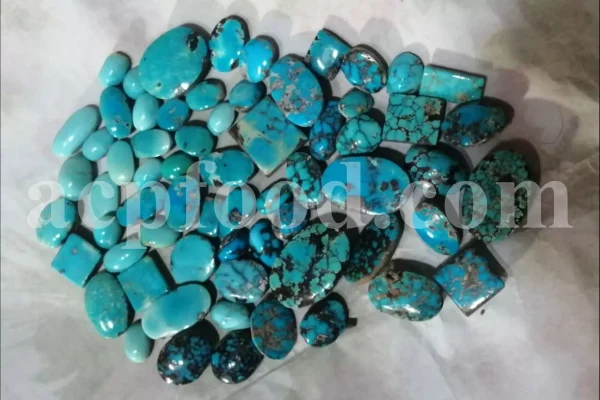
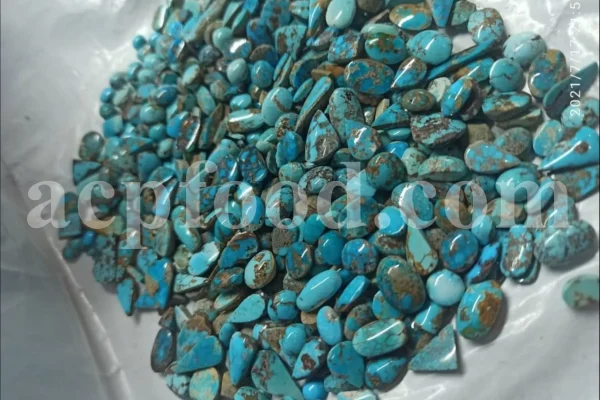
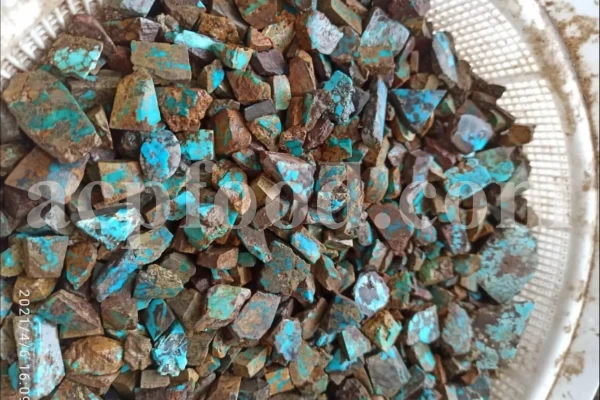

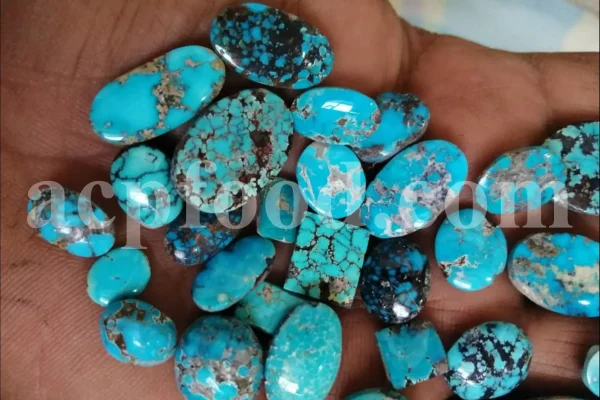
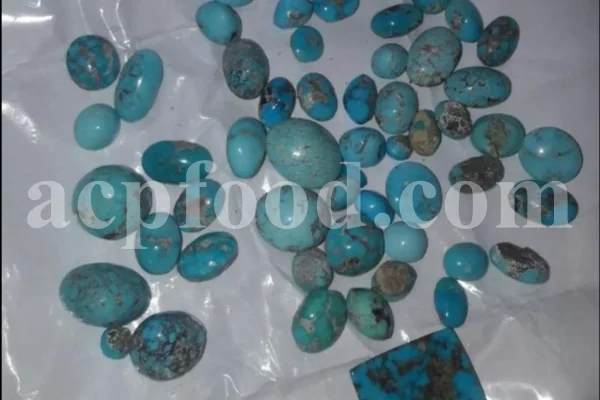
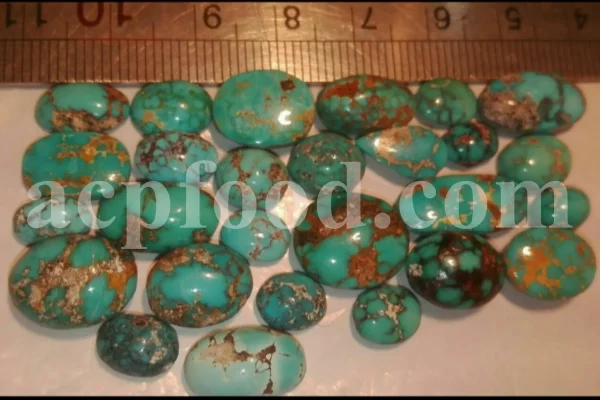

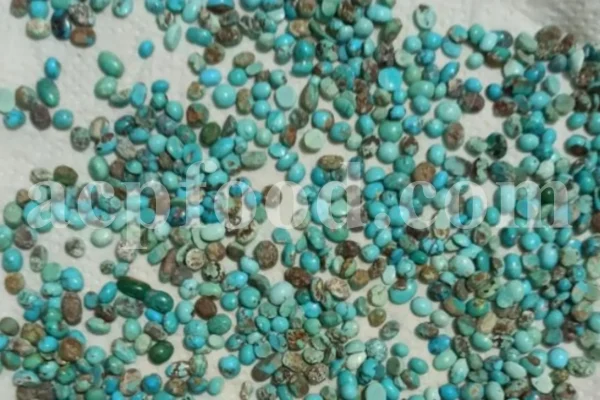
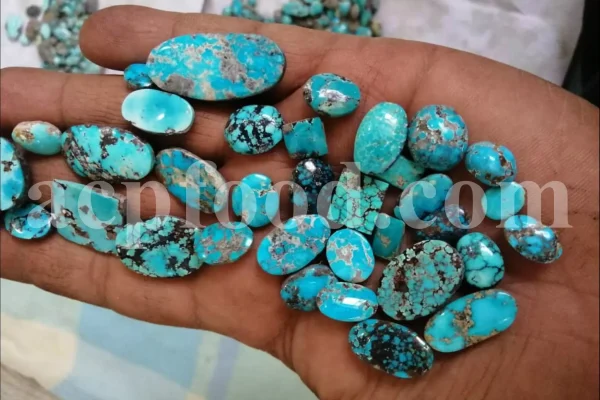
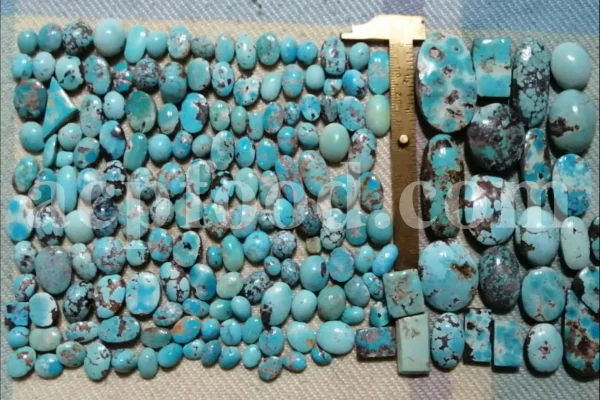
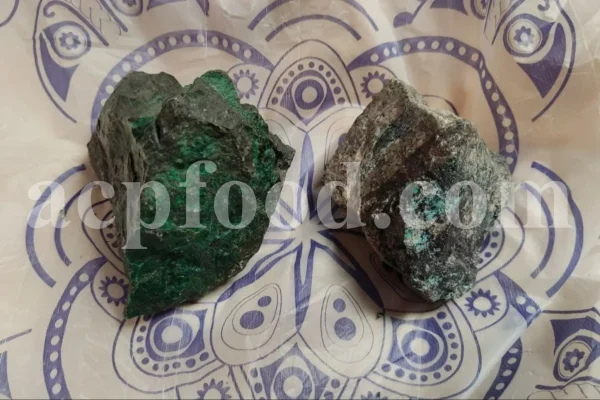
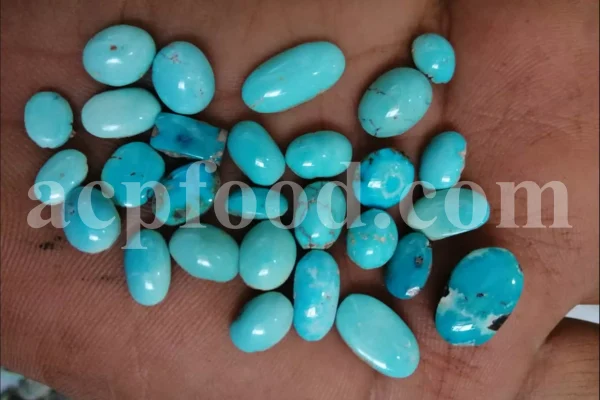
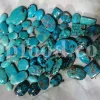
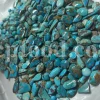
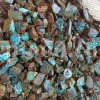

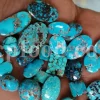

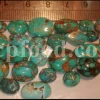
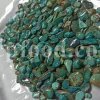

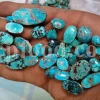
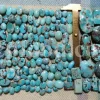

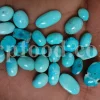
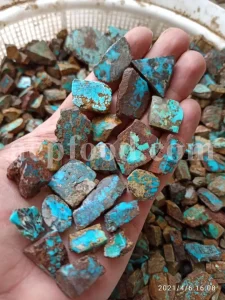

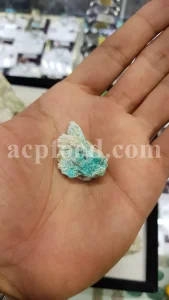
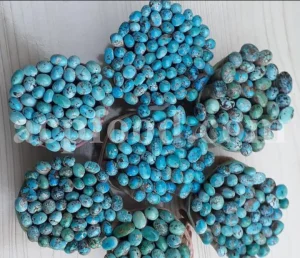
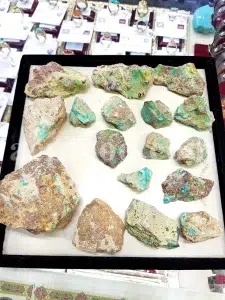
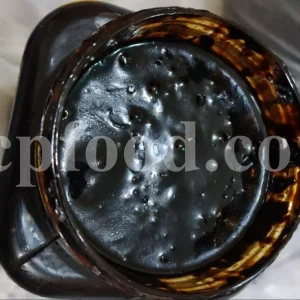
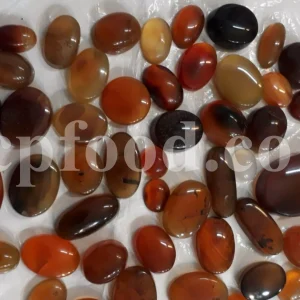
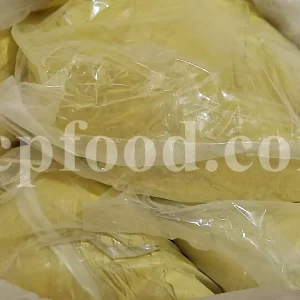
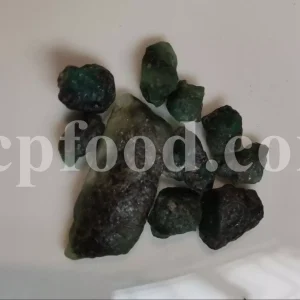
Reviews
There are no reviews yet.